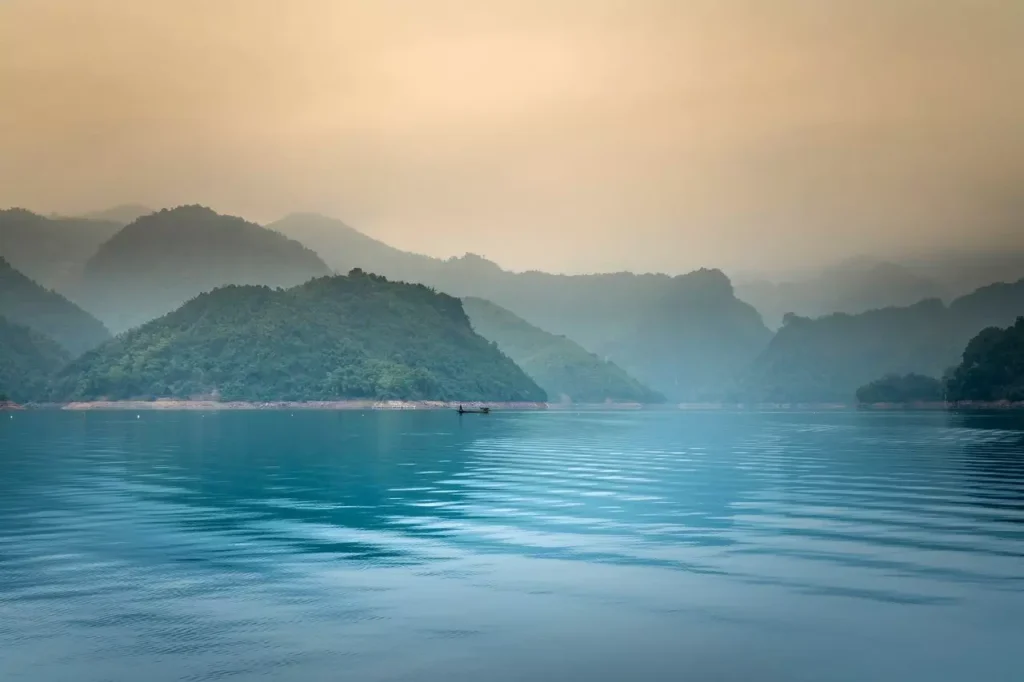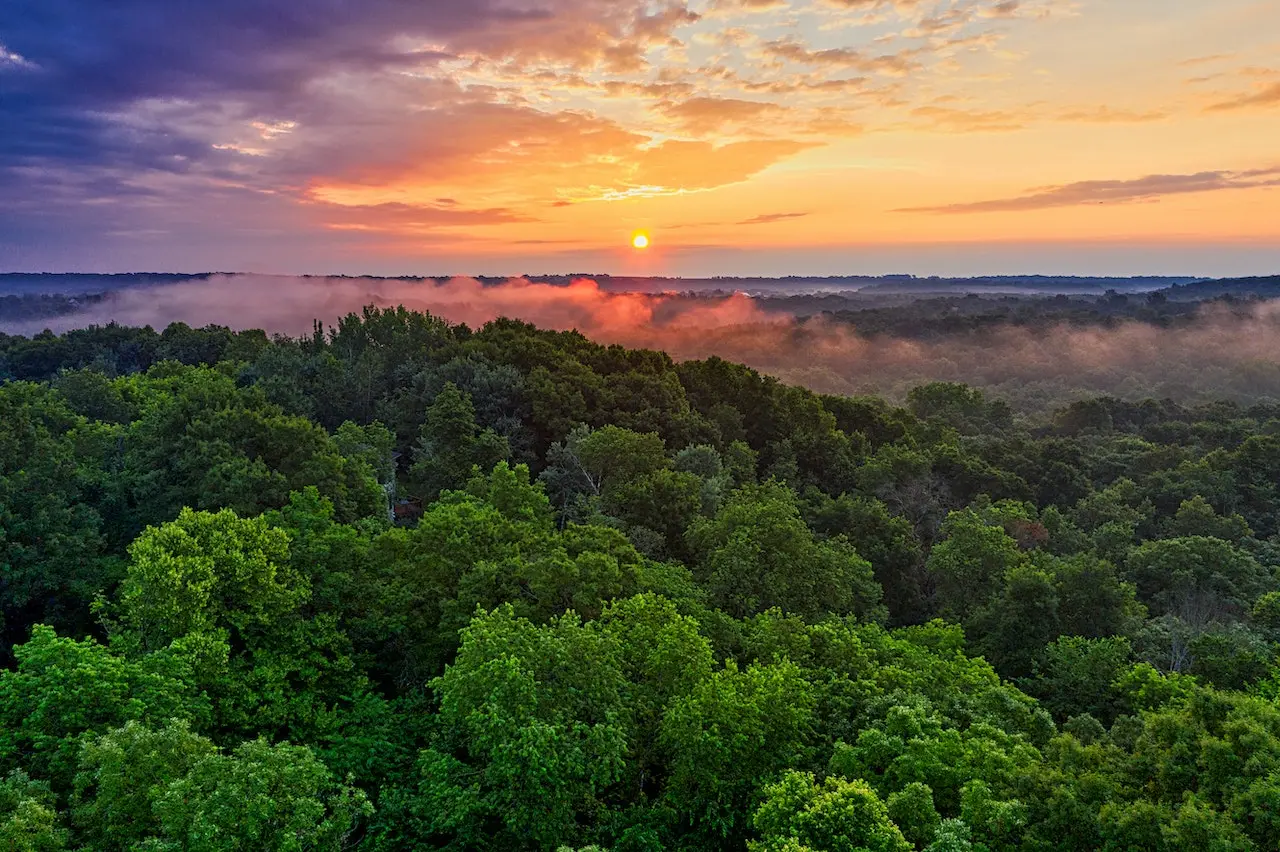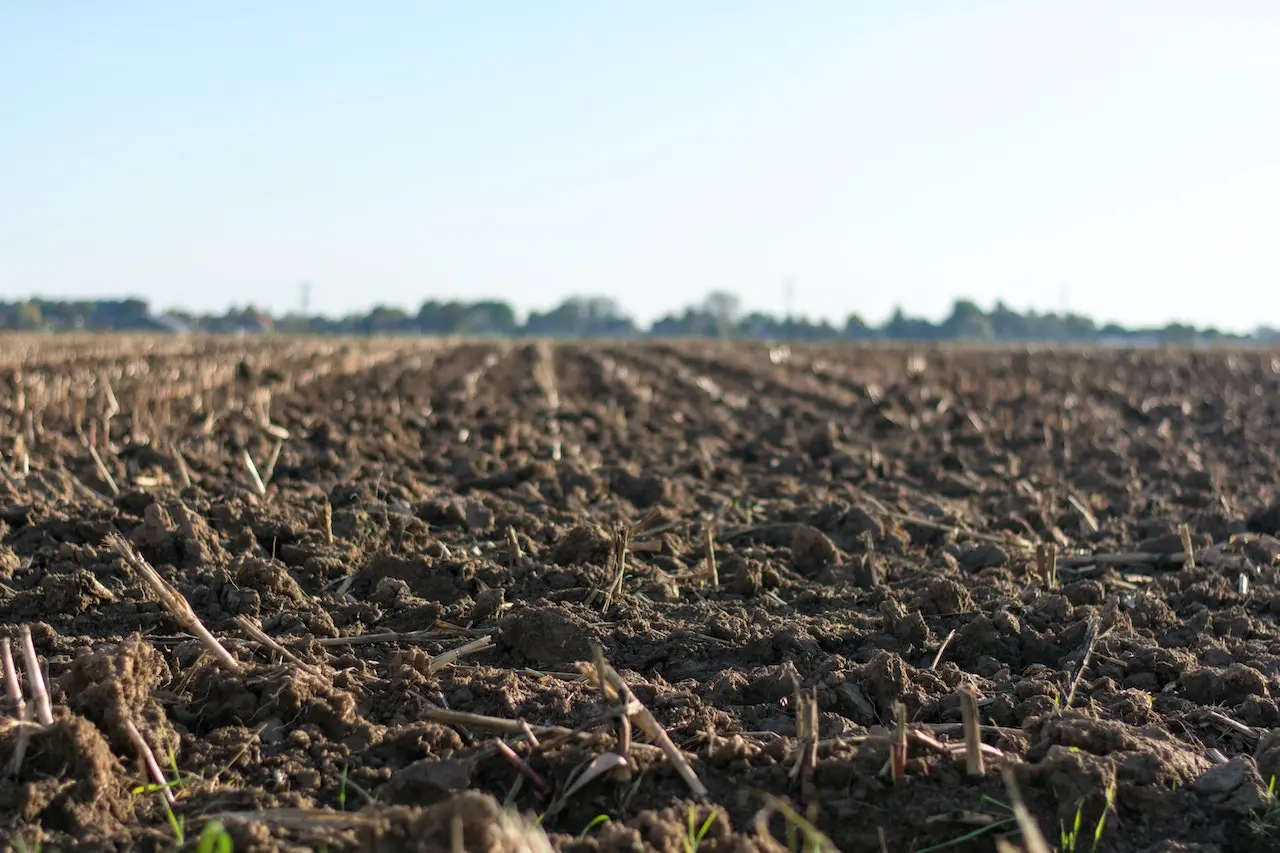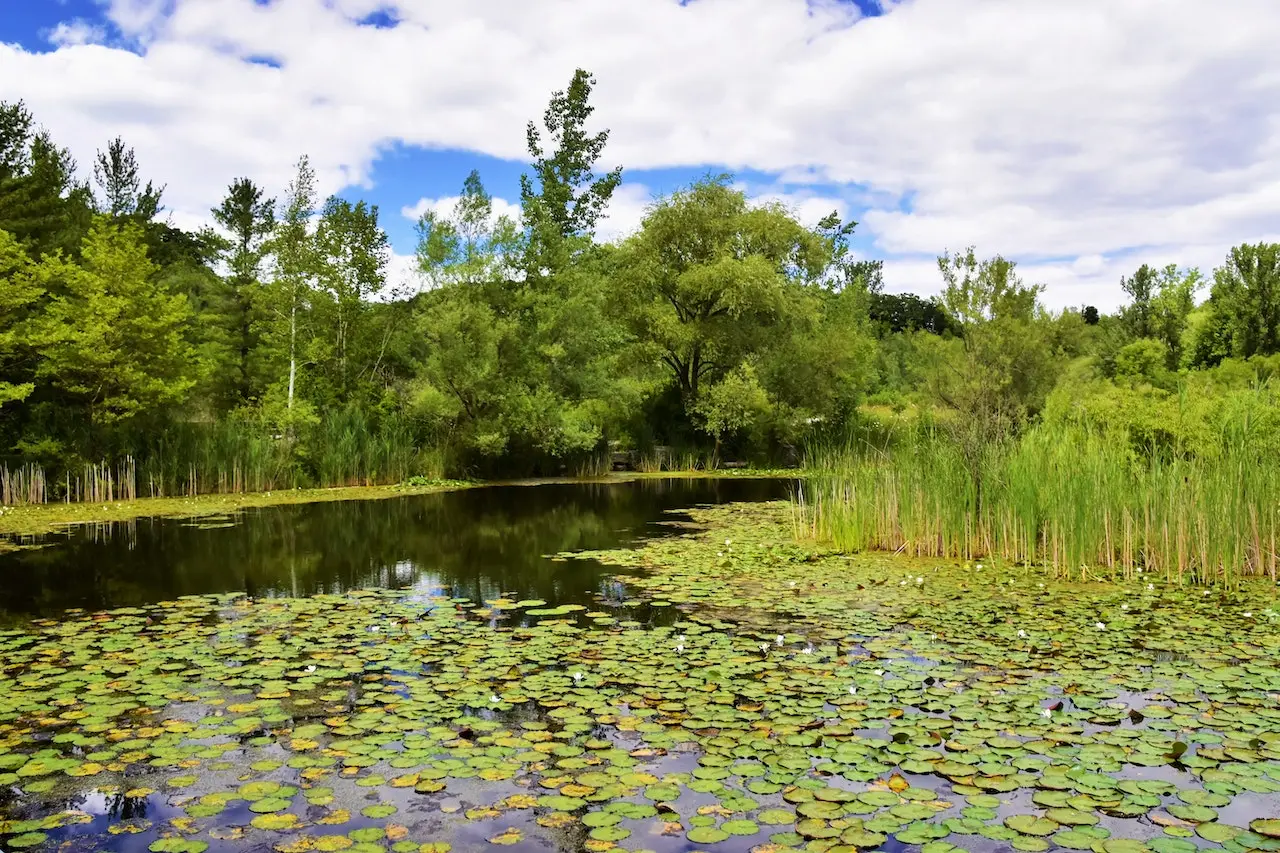
Carbon sinks: What are the “lungs” of the Earth?
You may have heard the terms “green lung”, “lungs of the planet”, etc. These expressions are often used to refer to forests acting as the “lungs” of the Earth and are frequently used in the media. What you may not know is that these terms refer to forests as natural carbon sinks.
In this article, we will discover what carbon sinks are and how human activity is destroying them.
- What is a carbon sink?
- Natural carbon sinks
- Oceans
- Forests
- Soil
- Wetlands
- Artificial carbon sinks
- Conclusion
- References
What is a carbon sink?
Carbon sinks are reservoirs that naturally or artificially absorb and store carbon dioxide (CO2) present in the atmosphere. Since CO2 is the main greenhouse gas, these reservoirs play a very important role in mitigating global warming and climate change.
The planet’s natural sinks absorbed half (53%) of the CO2 emitted by human activity between 2012 and 2021 [1]. Even so, the effectiveness of these sinks is not stable, as it is affected by factors such as climate and human activity.
On the other hand, artificial sinks are a recent and not very widespread practice. According to the International Energy Agency, these technologies captured and stored approximately 44 million tons of CO2 in 2021, which represented less than 0.1% of global emissions [2].
Natural carbon sinks
The main natural carbon sinks are oceans, forests, soil and wetlands.
Oceans
The oceans are the planet’s main carbon sink, absorbing almost 26% of all CO2 emitted by human activities between 2011 and 2020 [1]. However, the absorption capacity of the oceans is not unlimited and there will come a point when they stop doing so and even begin to emit more CO2 than they receive.
To understand this we must first understand how the oceans capture CO2.

CO2 dissolves in ocean water due to a process called gas exchange. The ocean and the atmosphere are in constant contact and the gases move freely between them. In the case of CO2, the concentration of this gas in the atmosphere is higher than in the oceans and, as a consequence, more CO2 passes from the atmosphere to the oceans than vice versa.
This absorption process is aided by the fact that seawater contains salts and other minerals that can react with CO2 to form bicarbonate and carbonate ions, which are more soluble in water. Once CO2 is dissolved in seawater, several possible destinations await it.
Some of this CO2 is transported through the ocean by ocean currents and sinks to deeper layers, where it may remain stored for centuries until other ocean currents bring it back to the surface, where some of it is released back into the atmosphere.
Another part of the CO2, transformed into bicarbonate and carbonate ions, can be used by marine organisms such as mollusks and corals to build their shells and skeletons. Other organisms, such as phytoplankton, absorb CO2 during photosynthesis and when they die they sink to the bottom of the ocean, taking the CO2 with them.
Despite the above, the capacity of the oceans to absorb CO2 is not unlimited and its increasing level has serious long-term consequences.
When CO2 dissolves in seawater, it reacts with water molecules to form carbonic acid, which in turn releases hydrogen ions. This increases the concentration of hydrogen ions in the water, which causes a decrease in pH, making the seawater more acidic. This process is known as acidification and has numerous negative consequences for marine life that can also affect life on the earth’s surface.
Finally, it is important to remember that as the temperature of the Earth increases, so does that of the ocean. The solubility of gases in water depends on temperature, and the warmer the water gets, the less CO2 it can retain. Therefore, as the ocean warms, its ability to absorb CO2 decreases. This could lead to a greater release of CO2 from the ocean into the atmosphere, making it a net emitter of greenhouse gases in the future [3].
Forests
The exact amount of CO2 that the Earth’s forests absorb each year is difficult to calculate precisely, as it varies depending on factors such as the type and age of the forest, its location and its current state of growth. However, it is estimated that forests worldwide absorbed approximately 10% of all CO2 emitted by human activities between 1990 and 2007 [4].

Plants and by extension forests absorb CO2 from the atmosphere through the process of photosynthesis. Plants use the sun’s energy to convert CO2 and water into carbohydrates and oxygen. The carbohydrates are used as energy by the plant and oxygen is released into the atmosphere as a by-product. Most of the absorbed CO2 is stored as carbon in the plant’s molecules that make up its roots, leaves, trunk, etc. Since trees are the largest and longest-lived plants in existence (some species can live for hundreds of years), they are capable of storing large amounts of carbon for long periods of time.
It is important to note that not all forests capture CO2 with the same efficiency. Tropical rainforests, such as the Amazon, have a high density of trees and can capture much more CO2 per hectare than other forests. This is because they enjoy a warm, humid and rainy climate, which together with a soil very rich in organic matter makes the trees grow throughout the year, resulting in more trees absorbing CO2 for longer.
Unfortunately, deforestation and degradation of forests are not only reducing their role as carbon sinks but are also turning them into a source of CO2 emissions as in the case of the Amazon rainforest [5]. When forests are cut down or burned, the carbon stored in trees and soil is released back into the atmosphere in the form of CO2, contributing to global warming. In addition, uncontrolled deforestation can alter the local and regional climate, causing changes in temperature, precipitation and weather patterns that can further exacerbate climate change.
In recent years, public and private initiatives to plant millions or even billions of trees have multiplied, with the idea of reversing the historical process of deforestation and helping in the fight against climate change. These projects, although well-intentioned, risk focusing too much on the number of saplings planted and paying too little attention to ensuring their long-term survival and development. In addition, some of these projects have been used politically to divert public attention from more important environmental problems [6].
Soil
Soil is one of the largest carbon sinks on the planet, storing more carbon than the atmosphere and all terrestrial vegetation combined [7].
Carbon is stored in the soil mainly in the form of organic matter, composed of decomposing plant and animal matter. This organic matter is divided into two main groups depending on its decomposability and its residence time in the soil: labile organic matter and stable organic matter.

Labile organic matter consists of compounds that are easily decomposable by soil microorganisms. This type of matter includes fresh plant residues, such as leaves, stems and roots, as well as matter that is in the early stages of decomposition, such as dead animals. Microorganisms decompose and recycle this matter rapidly, releasing nutrients and carbon into the soil, but also emitting CO2 and methane into the atmosphere as part of the process. This is why recycling organic matter in cities is another important part of the fight against global warming.
Soil not only emits CO2 but also absorbs it indirectly from the atmosphere. After photosynthesis, part of the CO2 absorbed by plants passes into the soil through the roots in the form of organic compounds, which are then used by soil microorganisms as food. This microbial activity generates stable organic matter, such as humus.
Stable organic matter forms over time as labile organic matter is transformed by physical, chemical and biological processes in the soil, creating more complex and decomposition-resistant compounds. Stable organic matter can persist in the soil for decades, centuries or even millennia, making it an important long-term store of carbon and nutrients in the soil.
Unfortunately, the soil’s capacity to act as a carbon sink is continually reduced by human activity. Deforestation and the conversion of natural vegetation to cropland or urban areas can lead to significant losses of soil carbon, while intensive agriculture and livestock farming, together with the use of synthetic fertilizers, accelerate the decomposition of organic matter and reduce stored carbon. In addition, the burning of crop residues releases carbon dioxide into the atmosphere, decreasing the amount of organic matter that can return to the soil. [7].
Wetlands
Wetlands are areas of land inundated with water for all or part of the year and are found throughout the world, from the poles to the tropics. Examples of wetlands include swamps, marshes, peatlands and mangroves, among others.
As we saw earlier, when organic matter from animals and plants decomposes in the soil, CO2 and methane are emitted into the atmosphere as a result of microbial activity. In wetlands, this organic matter sinks into the water, where decomposition occurs more slowly than in the soil, causing the organic matter to accumulate progressively at the bottom of the wetland, storing the carbon with it. Wetlands contain 20-30% of the Earth’s total soil carbon, despite occupying only 5-8% of the Earth’s land surface [8].

Unfortunately, the same characteristic that makes wetlands excellent carbon sinks also makes them major emitters of methane, a greenhouse gas 28 times more potent than CO2. Organic matter submerged in water, an environment with low oxygen levels, is broken down by microorganisms through a process called anaerobic decomposition, which produces methane as a byproduct.
Although wetlands are considered the largest natural source of methane [9], most of the methane produced in wetlands is not released immediately but instead accumulates in the soil in the form of bubbles or dissolves in water. Methane is released into the atmosphere when the wetland bottom is disturbed or when water levels change, such as during periods of flooding or drought.
Human activity contributes to the greenhouse gas emissions of wetlands in several ways. Global warming increases the temperature of wetlands, which increases microbial activity and the production of more methane. Similarly, global warming causes the thawing of permafrost, a soil that remains frozen year-round in regions such as Siberia and contains large amounts of organic matter. As it thaws, all that organic matter begins to decompose in the water from the melting ice, producing even more methane. Finally, the draining of wetlands for conversion to crops or development land causes the methane stored in them to be released into the atmosphere, and as their surface area shrinks, their capacity to store carbon is reduced.
Artificial carbon sinks
In addition to natural carbon sinks, there are also artificial sinks, such as carbon capture and storage (CCUS) technologies. These technologies seek to capture CO2 emitted in industrial processes, power plants and others, and then store or reuse it.
Despite existing for decades, these technologies still have low adoption in most countries, mainly due to the lack of specific infrastructures, installation costs, storage costs and lack of public support. Once these problems are solved, CCUS technologies are expected to significantly reduce CO2 emissions in industries such as cement and steel [10]. CCUS technologies are currently used in some natural gas facilities, coal plants and oil refineries, and their use is expected to continue to expand.
Despite its potential benefits, a common criticism of CCUS technologies from environmentalists is that it diverts investment away from renewable energy and maintains our dependence on fossil fuels.
Conclusion
Carbon sinks play a crucial role in climate change mitigation by absorbing and storing a large part of the CO2 emitted into the atmosphere by human activities. Natural sinks also provide habitat for countless species, regulate water cycles, and support human livelihoods such as fishing and agriculture.
Among natural sinks, the oceans play a prominent role by absorbing a quarter of the CO2 emitted by human activities. However, water acidification and decreasing absorption capacity as the ocean warms pose serious long-term problems. Forests are also important sinks, but deforestation is reducing their carbon storage capacity. Soil, rich in organic matter, stores more carbon than the atmosphere and terrestrial vegetation combined, but activities such as intensive agriculture or urbanization affect its sequestration capacity. Wetlands, although excellent carbon sinks, also emit methane, an important greenhouse gas.
It is essential to prioritize the protection and restoration of natural carbon sinks while exploring complementary solutions such as artificial sinks.
References
- Friedlingstein, P., Jones, M. W., O’Sullivan, M., Andrew, R. M., Bakker, D. C., Hauck, J., … & Zeng, J.; 2022; Global Carbon Budget 2021; Earth Syst. Sci. Data, vol. 14, 1917–2005, 2022
- IEA; 2022; CO2 Capture and Utilisation; IEA, Paris; License: CC BY 4.0
- Scott C. Doney, Victoria J. Fabry, Richard A. Feely, and Joan A. Kleypas; 2009; Ocean Acidification: The Other CO2 Problem; Annual Review of Marine Science, Vol. 1:169-192
- Yude Pan, Richard A Birdsey, Jingyun Fang, Richard Houghton, Pekka E Kauppi, Werner A Kurz, Oliver L Phillips, Anatoly Shvidenko, Simon L Lewis, Josep G Canadell, Philippe Ciais, Robert B Jackson, Stephen W Pacala, A David McGuire, Shilong Piao, Aapo Rautiainen, Stephen Sitch, Daniel Hayes; 2011; A large and persistent carbon sink in the world’s forests; Science, Vol 333, Issue 6045, pp. 988-993
- Luciana V. Gatti, Luana S. Basso, John B. Miller, Manuel Gloor, Lucas Gatti Domingues, Henrique L. G. Cassol, Graciela Tejada, Luiz E. O. C. Aragão, Carlos Nobre, Wouter Peters, Luciano Marani, Egidio Arai, Alber H. Sanches, Sergio M. Corrêa, Liana Anderson, Celso Von Randow, Caio S. C. Correia, Stephane P. Crispim & Raiane A. L. Neves; 2021; Amazonia as a carbon source linked to deforestation and climate change; Nature 595, 388–393 (2021)
- Karen Holl, Pedro H. S. Brancalion; 2020; Tree planting is not a simple solution; Science 368,580-581(2020)
- Ontl, T. A. & Schulte, L. A.; 2012; Soil Carbon Storage; Nature Education Knowledge 3(10):35
- Nahlik, A. M., & Fennessy, M. S.; 2016; Carbon storage in US wetlands; Nature Communications, 7(1), 1-9.
- Saunois, M., Stavert, A. R., Poulter, B., Bousquet, P., Canadell, J. G., Jackson, R. B., … & Zhuang, Q.; 2020; The global methane budget 2000–2017; Earth system science data, 12(3), 1561-1623.
- Celso da Silveira Cachola, Mariana Ciotta, Alex Azevedo dos Santos, Drielli Peyerl; 2023; Deploying of the carbon capture technologies for CO2 emission mitigation in the industrial sectors; Carbon Capture Science & Technology, Volume 7, 2023, 100102, ISSN 2772-6568,